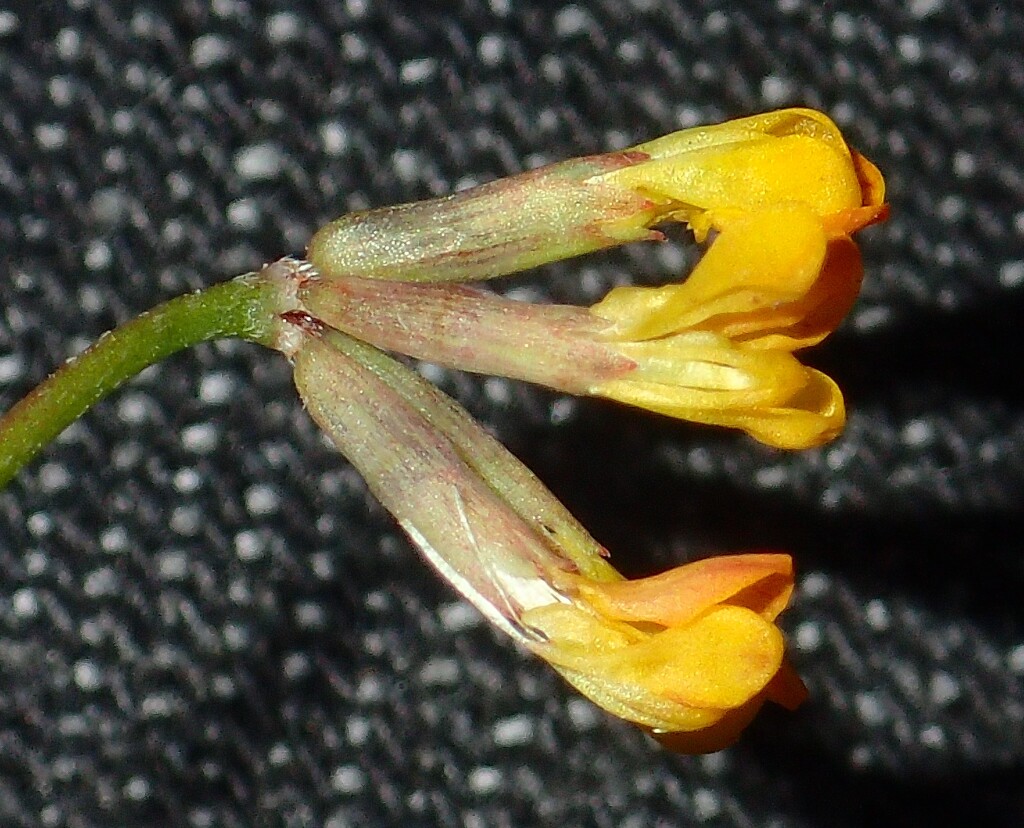Ornithopus pinnatus
(Mill.) Druce Sand Bird's-footProstrate or ascending annual herb to 50 cm tall; branches sparsely pubescent to glabrous. Leaves imparipinnate; leaflets 5–19, linear to elliptic or oblanceolate, mostly 5–15 mm long, 2–6 mm wide, lower surface glabrous, upper surface sparsely pubescent, entire, obtuse with a small apical point; stipules 1–2 mm long. Inflorescences 1–5-flowered umbels; peduncles mostly 1.5–6 cm long; bracts minute or absent. Flowers on pedicels to c. 0.5 mm long; calyx c. 5 mm long, virtually glabrous, teeth shorter than tube; corolla 6–8 mm long, yellow; standard oblong; wings oblong; keel obtuse, shorter than wings. Pod linear, 20–35 mm long, c. 1.5 mm wide, usually curved, glabrous, slightly constricted between articles; beak filiform, to c. 5 mm long; articles usually c. 8; seeds ovoid, c. 1 mm long, brown. Flowers mainly Aug.–Jan.
VVP, GipP, OtP, NIS, EGL, HSF, HNF, OtR, Strz. Also naturalised WA, Qld, NSW, Tas., New Zealand. Native to western Europe and the Mediterranean. An occasional weed in south-central Victoria particularly on the Mornington Peninsula, often on sandy soils, with isolated records from northern and eastern Victoria.
Jeanes, J.A. (1996). Fabaceae. In: Walsh, N.G.; Entwisle, T.J., Flora of Victoria Vol. 3, Dicotyledons Winteraceae to Myrtaceae, pp. 663–829. Inkata Press, Melbourne.
 Spinning
Spinning


